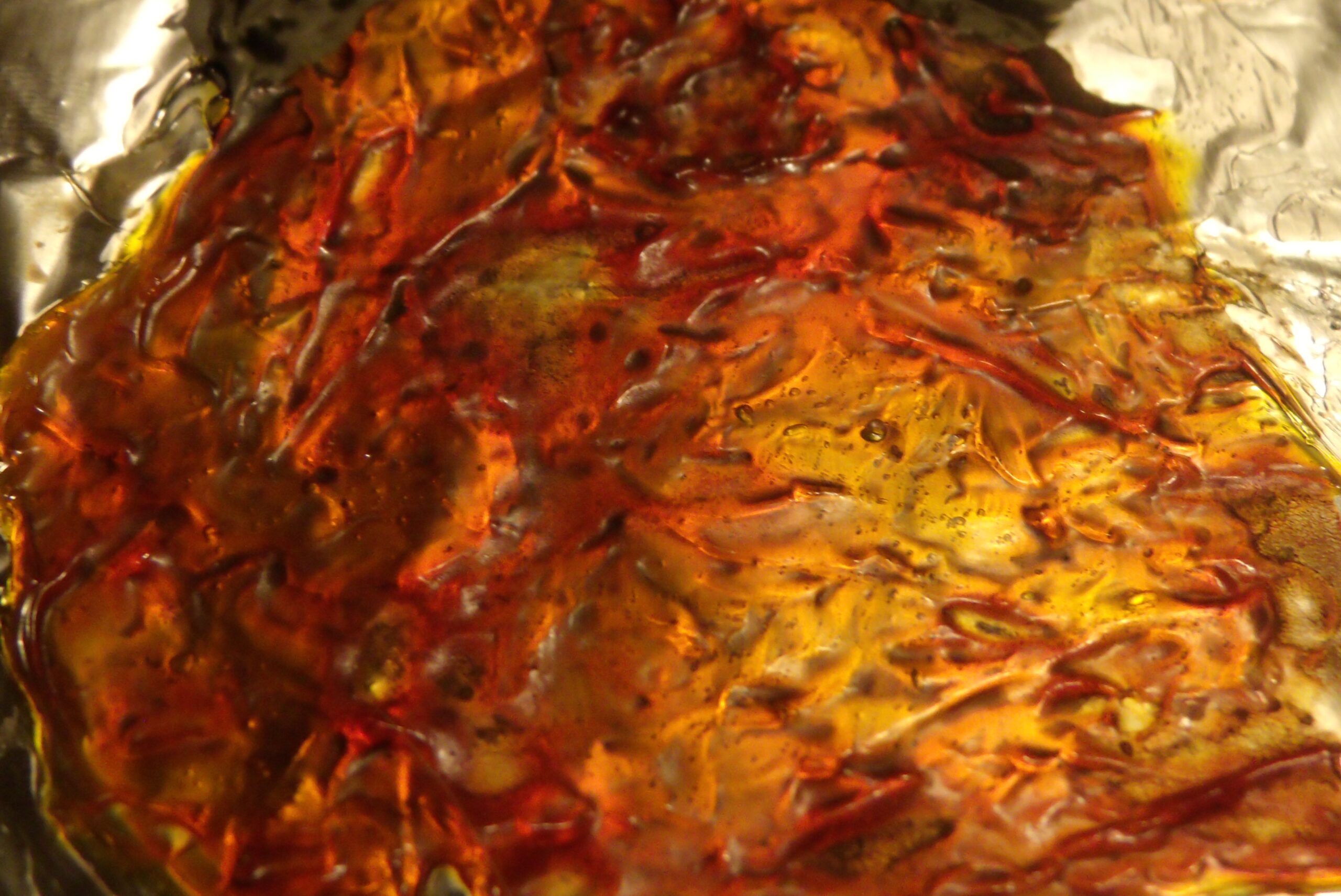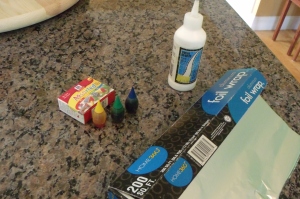
Lava is weird. Really weird. It is bright, it flows like a river, it burns, and can cool down to a solid all by itself. All of these traits make it a really cool environment to fight imaginary battles on, but they also make it really had to capture. Some very talented artists can paint impressive lava, but our skills in the painting department are a bit lacking. So what are terrain makers to do?
Our first effort was, of course, trying to paint the lava ourselves. That didn’t turn out so well. You could tell it was lava, but that may have been its only merit. Next, we tried melting beads. It came out globular, and the colors didn’t mix well at all. We scrapped that idea.
Our latest attempt has shown a little more promise.

It is easy to get lava-like colors with this method, and it naturally looks bright. Plus, it is very easy to sculpt, so your lava can be smooth or rough, or you could even put it into unnatural shapes. So, now to tell you what we did.

This lava is a simple combination of aluminum foil, yellow food dye, black wash, and moldable water effects. The process is pretty simple to execute, but we still have some kinks to work out. For instance, when we went to do the tutorial pictures for this, we used the shiny side, where we had used the diffused side for our experiments. The shiny side seems to make it almost too bright for our tastes. You might find differently though. We also are thinking of using a red wash to get some deeper reds mixed in. If you try this and find something that works really well, be sure to let us in on it!
WHAT YOU NEED

- Aluminum foil
- Yellow food dye
- Water effects (needs to be moldable)
- Black ink
- Toothpicks (or anything else to spread the dye)
STEPS
- Get your aluminum foil, and lay it out. We don’t like the effect that crinkling the foil gives to lava (the edges seem too sharp), but it is up to you. We’ve also found that the diffused side of the foil looks better for lava.
- (Optional) If you want volcanic glass, paint over those spots on the aluminum foil in grey. Don’t cover those spots in the dye.
- Spread your water effects very thinly over the tin foil. You should sculpt the water effects here, because once you add the dye, it becomes much more difficult.
- Immediately add a drop of yellow dye. Do not mix the dye in, simply spread the dye over the top of the water effects with a toothpick or something similar. (If it mixes in, your water effects brand is too runny for this project.) Spots with high concentration of dye will give you an orange, maybe even reddish color. The thinner areas will give you yellow.
- Wait until the water effects dries clear (ours takes about 24 hours), and then give it a very light coat of black ink.
- Cut the area out of the tinfoil, and put it on the table!









[…] The Perfect Lava […]